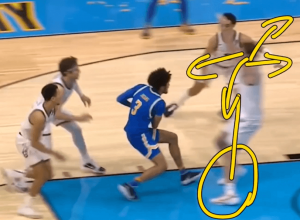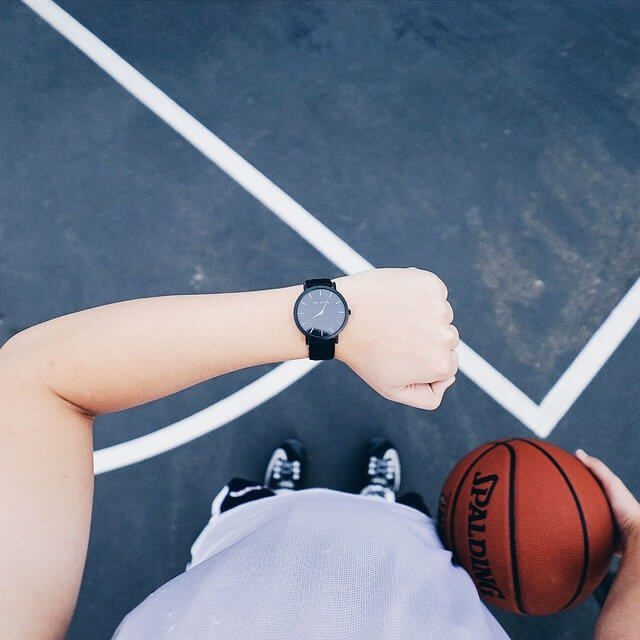Charging Foul in Basketball: Position Guide to Take the Charge
If you are a basketball fan, you will undoubtedly know that a lot of physical activity is involved in the game. Healthy but tough competition is involved in gaining victory, but some activities are labeled as foul. Pushing an airborne player or running across a player to get the basket during the play are some examples of fouls, and the latter is called “charging foul in basketball “according to the NBA rules.
People are curious to know what is charging in basketball?
Charging is a foul that occurs when an offensive player hits or pushes a defensive player at his torso. This illegal contact with an opponent player happens when a dribble runs over an offensive player while driving to the basket. A basket is not counted in case of a “charging” call. Similarly, on player control fouls, the offensive player cannot receive free throws.
A good player always remains careful about getting a charging call, which is counted as a foul and gives the other team possession. Experts always advise avoiding that call because it is a momentum killer, while on the other hand, it can be profoundly excruciating.
Do you want to know more about charging? Stay and dive into in-depth learning with us.
Charging is an offensive foul in a basketball game and can be committed in various ways. Even it can be taken with or without the ball. In all cases, a defensive player can take charge if he is in a legal guard position with feet firm on the ground and body towards the offensive player.
What Is Charging (Foul) in Basketball?
The following are some of the methods for charging:
- Refree may be call for charging if the defender is prepared to go before you exit for a layup attempt.)
- In a legal guard position, if you’re dribbling in the direction of a defender and trying to pass the ball before touching the defender, you can be judged a charging foul. Even if you don’t have any ball, you may hold responsible for side-stepping from a standing defender.

- In some cases, If the defensive player is standing firmly on the ground, he is in a legal position. The player in motion is (who may be a dribbler ) capable of originating contact. So the dribbler is also responsible for avoiding contact; if he initiates contact, he has to face the charging call.
- Similarly, if the defender gets the position before any layup attempt of the opponent player, the offensive player might face the charging call.
You may be Interested : How to better shoot in basketball?
The Difference between a Charge and Block Fouls
Though Charge and block seem similar in nature, they are two entirely different calls in basketball. A charge is a foul from the offensive side, and a block is regarded as a defensive foul. When an offensive player makes illegal contact with a defender who is in an established position, a charge is called.
A block is called in a situation when a defender Involves illegal personal contact with the offensive player to impede his progress. Block typically occurs when a defender creates any physical hindrance toward an offensive player driving to the hoop. The referee decides a charge or block call based on defender position when contact is made. The correct legal position of defensive player interaction made to the defensive player’s torso plays a decisive role in the specific call
Do You want to know what is the game length of basketball in different scenarios?
How to Get into Position to take Charge (Advantage)?
Players who learn how to take advantage of charge dominate the game.If you want to take charge, your position should be square to the offensive player. Adjust your position immediately into the path of the dribbler, and your feet must be planted on the ground. You don’t need to be stationary as a flag, but you should take the collision on your chest facing forward.
When the offensive player is airborne, you must provide him with room to land. You should not undercut him on landing because such an attempt can lead to a defensive foul.
Another excellent opportunity to take charge is keeping your feet broad on the ground and keeping your knees bent. When you stand up with such a broader posture, you’ll be closer to the ground, so you wouldn’t be hurt if you fall on the court.
Understanding the complexities of NBA roster rules is essential for any serious fan looking to grasp team strategy

Hello!
I’ve been playing and coaching basketball for over 15 years, and testing gear has always been part of my passion for the game. Over the years I’ve personally assembled and used more than 50 different basketball hoops — from budget portables you can roll onto a driveway to heavy in-ground systems that feel like what you see in gyms.
When I review a hoop, I don’t just copy specs from the box. I set it up, play on it in different conditions, and pay attention to how it holds up — whether it’s rim stability, rebound quality, or how the base handles wind and weather. I also keep up with the latest product releases and feedback from other players so my guides reflect what actually works, not just marketing claims.
My goal here at Outdoor Basketball Shop is simple: to share hands-on, unbiased insights so you can choose the right hoop for your space, your budget, and your style of play. Every recommendation is based on real testing and experience, and I always disclose when links may earn a commission, at no extra cost to you.
. Learn more about me on my about page.






